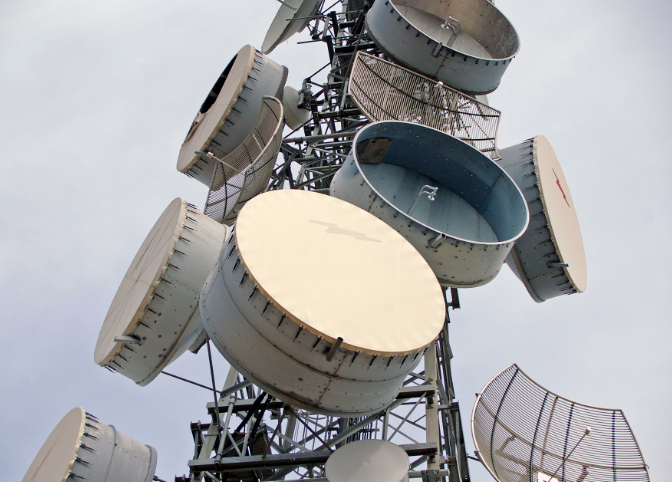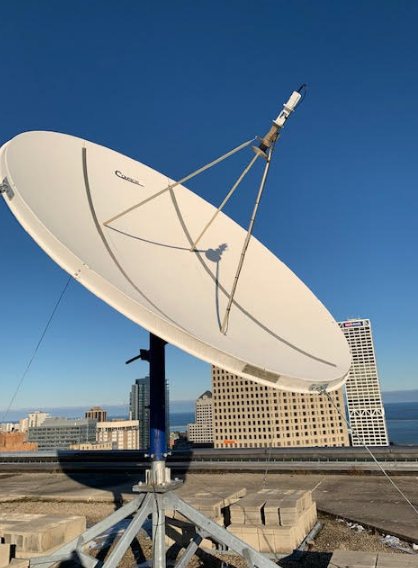Parabolic dish antennas are widely used in microwave applications due to their high gain (20-40 dB), focused directivity for long-distance point-to-point communication, broad frequency range (1-300 GHz), efficiency in power use, and customizable sizes and specifications for varied applications.
High Gain and Directivity
One of the primary reasons why parabolic dish antennas are so popular in microwave applications is the incredible gain and directivity that these devices can achieve. This means that they can focus their transmitted or received signals more tightly on to a single direction, which is essential for any application that requires focused signal transmission or reception across long distances. Typically, such antennas achieve gains between 20 to 40 dB, which substantially boosts the signal strength and allows to maintain communication across vast distances without increasing the transmission power.
One of the examples of such an application is the broadcasting and receiving signals through satellites. In typical satellite television, a parabolic dish with a diameter around 60 cm located on the roof of a household can receive television signal from a satellite in geostationary orbit. The satellites in question are typically located over 35 000 kilometers away, and their signal is typically extremely faint and difficult to pick up by any device. However, the high directivity of the antenna can ensure that it can capture the satellite signal because it is focused on a very small portion of the sky and disregards any signals not aligned with its main axis.
More relevant in the context of this course is a data communication link between two fixed points, such as two buildings of a corporation or two internet service providers hundreds or thousands of kilometers apart. In such cases, a high-gain parabolic dish can ensure that a strong signal can be maintained and large amounts of data can be sent quickly, while the narrow beam width will ensure that no other sources of data will interfere. This can be particularly important in densely populated and high-spectrum urban areas. Additionally, the high gain of parabolic antennas ensures that the transmitted energy will be used efficiently to reach maximum transmission range. This means that the energy and the cost of transmitter and receiver equipment or devices can be minimized. For example, by transitioning to a high-gain parabolic antenna, one can reduce the required power of a transmitter from 100 W to 10 W, which can result in significant savings in system and operational costs.

Frequency Range
Parabolic dish antennas exhibit outstanding performance over a broad frequency spectrum, and they are among the most versatile solutions for microwave applications. They operate particularly well in the 1 GHz to 300 GHz frequency range, which covers virtually all systems employing microwaves, e.g. satellite communications, radio detection and ranging systems, airborne radars, and wireless data links. In satellite communication systems, different frequencies are used in the uplink from an earth station to satellite and the downlink in the opposite direction. For example, the C-band operates in the 4 to 8 GHz for the downlink and 6 to 10 GHz for the uplink. The bandwidth is advantageous because this type of parabolic dish antenna can be made with various diameters and surface accuracies known as the f/D ratio to match the required frequency.
In radar systems, microwaves between 1 GHz and 40 GHz, depending on the desired resolution and range, are common in air- and shipborne applications. A parabolic dish antenna exhibits the same characteristics regarding its directional properties and the ability to illuminate and detect distant objects, and the curvature of a modern high-accuracy radar system dish is calculated using the properties of the electric and magnetic fields with wavelengths in the range of cm and mm due to the operation in the range of 1 to 40 GHz. Air traffic control radars, for instance, operate in the 2.7- to 2.9-GHz frequencies to track moving objects, i.e. aircrafts between distances 600 and 250 miles from the transmitter to the receiver. The same principles apply to wireless data links employed at airports and other facilities requiring access to the internet. Such links utilize bands generally related to high frequencies focusing waves with minimal dispersion over long distances. The dish’s f/D ratio size also increases as the operating frequency becomes higher.
Point-to-Point Communications
Point-to-Point communications, which are direct links between two locations, are a significant feature of parabolic dish antennas. It is valuable in deployment scenarios because, in many ways, they allow organizations to set up a communication link that cannot be intercepted. For example, in situations where physical cables cannot be laid between the locations, either because the distance is too long or because of physical obstacles, running a point to point parabolic dish antenna setup is a cost-effective and reliable way to establish a communication channel. It is an especially prevalent application in the internet service field — two of any given buildings, say, 50 kilometers apart, can use parabolic dish antennas to run a high-speed data connection that does not require underground cables. The data transfer speed can be as high as that of optical fiber, often achieving gigabit per second transfer rates. In addition, the cost of the microwave link can be lower than that of cable, as the urban environment where the cables need to be laid is expensive to dig through, and in rural areas, no telecom infrastructure may exist in the first place.
Moreover, the ranges where parabolic dish antennas are deployed can vary from very close — a few kilometers, allowing for urban points to point communications — to very long — up to several hundred kilometers. Thus, other uses of parabolic dish antennas and point to point microwave links can be across physical barriers such as lakes and highways. The obvious material application is urban environment, where physical barriers between locations are prevalent and the cost of cable running is high for the disturbance of urban traffic. Moreover, in terms of physical applications, parabolic dish antennas are deployed in emergency communications. Natural disasters damaged the existing traditional communication infrastructure, and using quickly deployed parabolic dish antennas allowed for temporary point to point links that allowed relief teams to coordinate action.

Efficiency
Parabolic dish antennas are well-known for their power efficiency in the microwave range. The considered feature is observed in the high precision with which the antennas use the power supplied to produce signals and receive data. The application of this type of antenna is especially frequent when resources are limited, and the electricity consumption should be reduced.
The main positive effect of parabolic dish antennas is their capacity to use a prevalent part of the energy that is emitted by the modem in the direction. The form factor of the antenna dish allows directing nearly all the signal that is transmitted in the required direction. In the example, for the signal transmitted at 100 km distance, with the overall power consumed at the transmitter of 1W, over 0.9W can be focused mainly towards the receiver. In contrast to that, the omnidirectional or sector design focused antennas would use the same power consumption, but owing to weaker concentration at the dish, only 0.5w would be concentrated in the required direction. At 100 km the difference between the power received by the transmitter is considerable and may jeopardize the reach and quality of the signal.
Also, parabolic dish antennas imply much-reduced distance of energy distribution, which reduces the loss of power. This reason also implies a decreased consuming power for the same range, which leads to a lowered upkeeping cost. As a result, even though other antennas would require a 50W transmitter, the parabolic dish antenna would use only 10W transmitter, which has a significant impact of electricity bills of the medium-using organization. Also, taking into account the frequent application in telecommunications, it is crucial in areas where no regular electricity is applied for transmission, such as remote and rural areas.
Scalability and Customization
Scalability and opportunities for customization have traditionally made parabolic dish antennas the type most preferred in microwave applications. Considering diverse operational demands typical of various industries, such features are essential as they ensure that projects of any size can be effectively handled. Thus, whereas in small applications, the size and curvature of the dish can be adjusted to effectively work at certain frequencies, for high-power, long-distance telecommunications, or deep-space satellite application, a much larger dish will be required. Parabolic dish antennas can grow in size from something like a foot in diameter for something like a campus application when these applications do not have to be particularly long distances. At the upper spectrum, these dishes can reach all difference sizes, from something like 10 meters in diameter to over 100 meters.
Large dishes are representative of dishes used in research and astronomy, where such dishes are actually purely meant for communication. As such, smaller parts likely have similar functionality capable to work with communication systems in general – or at least those dedicated for broad wavelengths per certain dishes’ parameters. The curvature of the dish precisely matches its focal point. The dish does not have to be a parabolic curve, as long as it has the right shape to focus parallel waves onto the point source. However, any deviations from the ideal shape will reduce the efficiency of signal transmission or receiving. ^ Tit maximizes the gain, minimizes the beamwidth, and minimizes the sidelobe levels of the antenna feed]. Along with the dish, the texture is important as well. In some cases, when in a coastal area, they will last a year. Once during the summer, all antennas became corroded to the point that they had to be replaced.
Now, they are made with better materials and treatments so that they could last indefinitely in such an extreme application. Aesthetically, the antennas match ships and other equipment. Additionally, offshore, some of them can feed from the ship itself, communicating it wirelessly. The signal is boosted quite a bit, enabling a larger area to be covered from less far off the shore. The general dish shape could be put on a trailer for mobility for military applications for setting them up quickly for emergencies. The focal length of the antennas used for airplanes is designed to be extremely precise as well as ^ “HF Radar Technical Brief.” maintaining a precisely made container. They looked no different than the other dishes, however, underneath, they could be no different than the other dishes, either, except for the signal with which they work.






